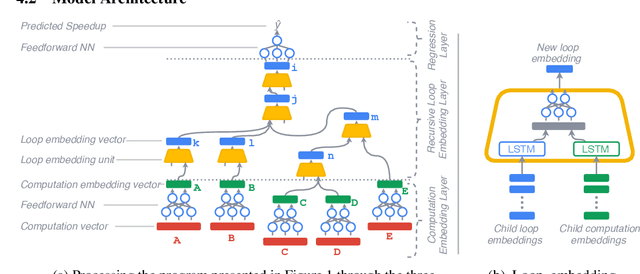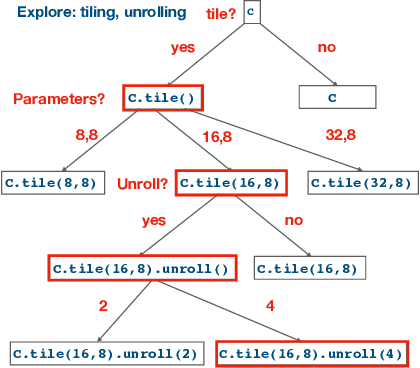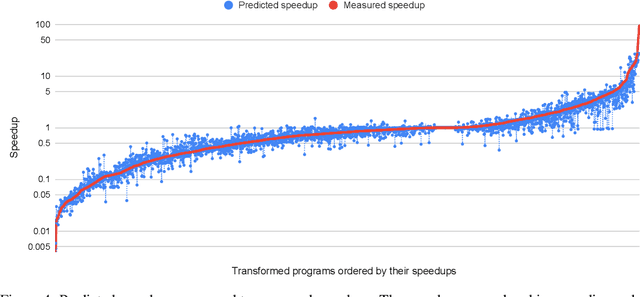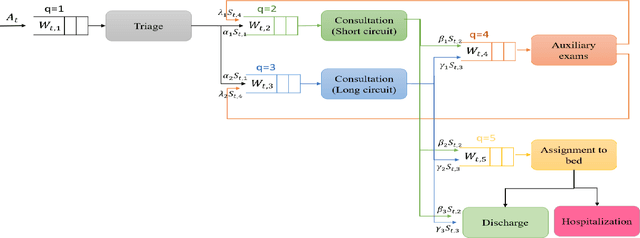Taha Arbaoui
UTT
A Deep Learning Based Cost Model for Automatic Code Optimization
Apr 11, 2021



Abstract:Enabling compilers to automatically optimize code has been a longstanding goal for the compiler community. Efficiently solving this problem requires using precise cost models. These models predict whether applying a sequence of code transformations reduces the execution time of the program. Building an analytical cost model to do so is hard in modern x86 architectures due to the complexity of the microarchitecture. In this paper, we present a novel deep learning based cost model for automatic code optimization. This model was integrated in a search method and implemented in the Tiramisu compiler to select the best code transformations. The input of the proposed model is a set of simple features representing the unoptimized code and a sequence of code transformations. The model predicts the speedup expected when the code transformations are applied. Unlike previous models, the proposed one works on full programs and does not rely on any heavy feature engineering. The proposed model has only 16% of mean absolute percentage error in predicting speedups on full programs. The proposed model enables Tiramisu to automatically find code transformations that match or are better than state-of-the-art compilers without requiring the same level of heavy feature engineering required by those compilers.
A Mixed Integer Linear Program For Human And Material Resources Optimization In Emergency Department
Nov 27, 2020



Abstract:The discrepancy between patient demand and the emergency departments (ED) capacity, that mainly depends on human resources and on beds available for patients, often lead to ED's overcrowding and to the increase in waiting time. In this paper, we focus on the optimization of the human (medical and paramedical staff) and material resources (beds) in the ED of the hospital center of Troyes, France (CHT). We seek to minimize the total number of waiting patients from their arrival to their discharge. We propose a mixed integer linear program solved by a sample average approximation (SAA) approach. The program has been tested on a set of real data gathered from the ED information system. Numerical results show that the optimization of human and material resources leads to a decrease of total number of waiting patients.
 Add to Chrome
Add to Chrome Add to Firefox
Add to Firefox Add to Edge
Add to Edge